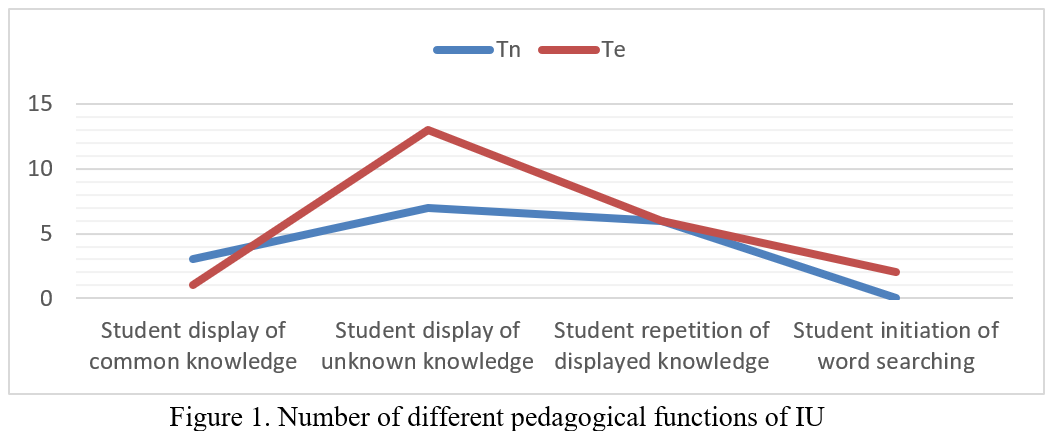A Comparative Study of Sequences Elicited by Incomplete Utterances in EFL Classroom Interaction
Abstract
The sequence plays a central role in EFL classroom interaction. Incomplete Utterance(IU) is universally found in EFL classroom, and many scholars mention the sequences elicited by IUs. However, little research has been done to compare IU sequences between an experienced EFL teacher’s classroom interaction and a novice EFL teacher’s classroom interaction in China. Therefore, this study aims to explore the similarities and the differences in terms of locations, formats, and the number of pedagogical functions of their IU sequences. The study eventually finds that both of them use IU sequences in the same interactional locations and with the same formats, and they both use IU to check students’ knowledge, engage more students in classroom interaction, and help students solve outputting difficulties. The differences are that the experienced teacher designs more IUs to elicit students to display knowledge than the novice teacher and there is no student initiation of IU sequence in the novice teacher’s classroom interaction. The findings can enrich English teaching practice and English teacher development.
Downloads
References
Lerner, G. H. (1991). On the syntax of sentences-in-progress. Language in Society, 20(3), 441–458. https://doi.org/10.1017/S0047404500016572
Lerner, G. H. (1995). Turn design and the organization of participation in instructional activities. Discourse Processes, 19(1), 111–131. https://doi.org/10.1080/01638539109544907
Margutti, P. (2010). On designedly incomplete utterances: What counts as learning for teachers and students in primary classroom interaction. Research on Language and Social Interaction, 43(4), 315–345. https://doi.org/10.1080/08351813.2010.497629
Mehan, H. (1979). Learning lessons: Social organization in the classroom. Cambridge, MA: Harvard University Press.
Mercer, N. (1995). The guided construction of knowledge: Talk amongst teachers and learners. Multilingual Matters.
Persson, R. (2017). Fill-in-the-blank questions in interaction: Incomplete utterances as a resource for doing inquiries. Research on Language and Social Interaction, 50(3), 227–248. https://doi.org/10.1080/08351813.2017.1340698
Seedhouse, P. (2005). Conversation analysis and language learning. Language Teaching, 38(4), 165–187. https://doi.org/10.1017/S0261444805003010
Seedhouse, P. (2016). Conversation analysis as research methodology. In K. Richards & P. Seedhouse (Eds.), Applying conversation analysis (pp. 251–266). Springer.
Shen, Q., & Yao, S. (2022). Syntactically incomplete turns as delicate actions—A way to manage interpersonal relationships. Journal of Pragmatics, 197, 27–42. https://doi.org/10.1016/j.pragma.2022.05.007


This work is licensed under a Creative Commons Attribution 4.0 International License.
Copyright for this article is retained by the author(s), with first publication rights granted to the journal.
This is an open-access article distributed under the terms and conditions of the Creative Commons Attribution license (http://creativecommons.org/licenses/by/4.0/).









1.png)









1.png)











